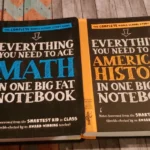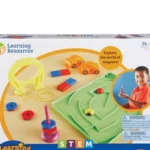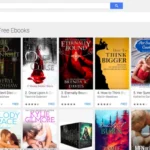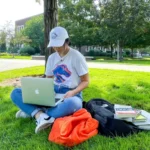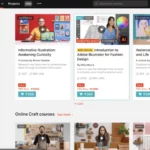Art has always been a powerful source of inspiration and creativity. It has the ability to transform moods, change attitudes, and provide a fresh perspective. Museums, in particular, have a unique role in fostering creativity among young learners. They serve as interactive classrooms where students can engage with exhibits and explore the creative process. Museums also act as agents of change, inspiring students to think differently and challenging them to push the boundaries of their own capabilities. In this article, we will explore the innovative approaches museums are taking to education, creating inclusive spaces for student artists, and encouraging collaboration and imagination. We will also delve into the benefits that museums offer to student artists, enhancing their skills, expanding their knowledge of art history and diverse cultures, and fostering personal growth and self-expression. Join us on this journey as we uncover the untapped potential of museums as inspiration for student artists.
Contents
Museums as Young Learner’s Classrooms

Museums have evolved into much more than just places for collection and display. They have become ideal spaces for young learners to explore and learn. Research has shown that the first five years of human life are crucial for development, and museums are using this knowledge to offer more opportunities and services for families with young children. By providing a range of programs and interactive exhibits, museums are transforming themselves into classrooms for young learners.
In these museum classrooms, students have the chance to engage with works of art and ask questions. This not only stimulates critical thinking and communication skills but also encourages collaborative learning. Through inquiry-based approaches, students learn how to use questions as tools to uncover meaning and explore different interpretations of art objects.
One of the unique advantages of museums as classrooms is the opportunity to experience art firsthand. Seeing original works of art and participating in facilitated, inquiry-based programs engage the senses and captivate students’ attention. This immersive experience allows students to appreciate the physicality of art and delve into the creative processes of artists. The emotional impact of these encounters can inspire greater recall and more detailed descriptions, leading to more complex interpretations.
Museums have the potential to create a vast community of museum advocates, individuals who will continue to support and appreciate museums throughout their lives. Even just one visit to an art museum can have a transformative effect, especially for young people who may not have previously considered the arts or entered a museum before. This single experience can change their entire worldview and shape the way they approach art.
Museums as young learner’s classrooms offer a unique and valuable educational experience. They provide a laboratory-type environment where children can experiment, enjoy, and discover things for themselves. By embracing the role of educators and docents, museums become spaces where students can present their own interpretations and engage in respectful debate. Through these experiences, museums play a crucial role in nurturing creativity and inspiring the next generation of artists and art enthusiasts.
To learn more about must-visit museums for students, click here.
The role of museums in nurturing creativity
Museums play a vital role in nurturing creativity among young learners. They provide a unique and inspiring environment where students can explore their creative potential. Museums serve as a catalyst for creativity by showcasing the works of artists and innovators who have emerged from the depths of their own imagination. The innovative and compelling settings of museum exhibits delight and intrigue visitors, encouraging them to think creatively.
By offering open-ended and self-directed exploration, museums allow students to engage with exhibits based on their personal interests and choices. This freedom to explore and experiment fosters creativity and encourages students to think outside the box. Museums also facilitate the creative process by providing opportunities for students to interact with artists themselves. Through workshops and interactive programs, students can learn from the creative minds behind the artwork, gaining insights into the artistic process.
The concept of the art museum as a creative laboratory challenges traditional notions of museums as places of collection and display. Instead, museums are transforming into interactive spaces where children can experiment, enjoy, and find out things for themselves. This shift in perspective reaffirms the belief that children learn best in a laboratory-type environment where they can freely explore and engage with the exhibits.
While museums have traditionally focused on preserving and showcasing art, the emphasis on creativity is becoming increasingly prevalent. Museums recognize that creativity is essential for relevance and attracting visitors. They are actively working towards integrating creativity into their exhibits, education programs, and overall museum experience.
Museums serve as catalysts for creativity in the lives of their visitors and communities. Through their exhibits, interactive programs, and innovative approaches to education, museums inspire and nurture creativity among students. By embracing creativity, museums are paving the way for a new era of artistic expression and exploration. To learn more about how museums can inspire student artists, check out our article on student-friendly museums.
Engaging students through interactive exhibits
Interactive exhibits are a key element in engaging students and enhancing their learning experience in museums. These exhibits go beyond traditional static displays and encourage students to actively participate and interact with the content. By doing so, students are able to develop a deeper understanding of the subject matter and retain information more effectively.
One example of an interactive exhibit is the “My Plate” exhibit, which challenges visitors to assemble a healthy breakfast, lunch, and dinner based on USDA recommendations. This hands-on activity not only teaches students about proper nutrition but also allows them to apply their knowledge in a practical way. Another interactive exhibit mentioned in the context is the flossing exhibit, where an egg-carton is converted into an oversized set of teeth. This exhibit not only educates students about the importance of oral hygiene but also encourages them to actively participate in the learning process.
These interactive exhibits also promote the development of essential skills such as research, writing, design, teamwork, and oral communication. As students engage with the exhibits, they are required to think critically, problem-solve, and communicate their findings to others. This process not only deepens their understanding of the subject matter but also enhances their overall learning experience.
Interactive exhibits create a sense of excitement and curiosity among students. They make learning fun and enjoyable, sparking students’ interest and motivating them to explore further. The use of technology, such as display screens, computer interactive consoles, and hand-held devices, can further enhance the interactive experience and provide students with a more immersive and personalized learning environment.
Interactive exhibits play a crucial role in engaging students and enhancing their learning experience in museums. By encouraging active participation and interaction, these exhibits not only deepen students’ understanding of the subject matter but also promote the development of essential skills. The use of technology further enhances the interactive experience, making learning more fun and enjoyable for students. Museums that embrace interactive exhibits are able to provide a unique and impactful learning environment for student artists.
Link to relevant article: /hidden-gems-underrated-museums-student-discounts/
Museums as Agents of Change
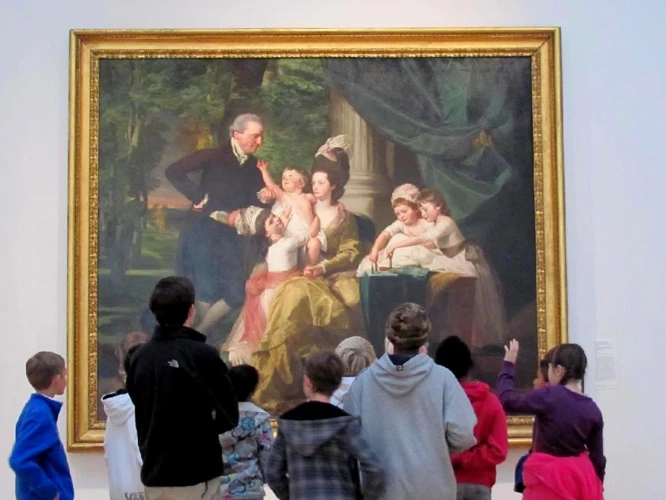
Museums have the incredible potential to serve as agents of change. They have the power to bring people together, contribute to local communities, and transform lives. In our current moment of political polarization, social debates, and global efforts to confront oppression, it is crucial to challenge the traditional notions of museums and actively shape a new future. Museums can no longer be seen as static institutions, but rather as living, dynamic spaces for connection, dialogue, and difficult conversations.
One way museums inspire change is by encouraging students to think differently. Through thought-provoking exhibits and interactive displays, museums challenge students to question their assumptions and expand their perspectives. By presenting diverse narratives and unheard stories, museums can amplify marginalized voices and promote inclusivity. They can also serve as spaces for acknowledging and reflecting on difference, bridging divides, and fostering understanding.
The impact of museum programs on student artists is significant. By engaging with art and experiencing the creative process firsthand, students are inspired to explore their own artistic capabilities. Museums provide a platform for students to experiment, take risks, and express themselves authentically. Through workshops, classes, and mentorship programs, museums offer invaluable opportunities for artistic growth and development.
To truly embrace their role as agents of change, museums must rethink their approach to education. They need to explore innovative strategies and create inclusive spaces for student artists. This can involve developing community advisory groups, forging partnerships within the local community, and actively seeking out diverse perspectives. By involving students in the decision-making process and valuing their input, museums can become more responsive and relevant to their needs.
Collaboration between student artists and museums is another powerful avenue for change. By encouraging collaboration and providing platforms for shared projects, museums can foster a sense of community and collective creativity. Students can learn from museum professionals, exchange ideas, and gain valuable insights into the art world. This collaboration not only enhances the artistic skills and techniques of student artists but also nurtures a sense of belonging and connection.
The benefits of museums for student artists are extensive. Museums enhance artistic skills and techniques through hands-on experiences and exposure to various art forms. They also expand knowledge of art history and diverse cultures, broadening students’ understanding and appreciation of the world around them. Museums foster personal growth and self-expression, empowering students to find their voice and communicate their ideas through art.
Museums have the potential to be transformative agents of change. By embracing their role as living institutions and actively engaging with their communities, museums can inspire students to think differently, foster collaboration and imagination, and provide numerous benefits to student artists. It is time to unleash the untapped potential of museums as inspiration for student artists and create a stronger culture of equity and care within these institutions.
Link: Art Beyond Canvas: Museums and the Unique Art Experience
How museums inspire students to think differently
Museums have the incredible power to ignite a shift in perspective and inspire students to think differently. Through their unique collections and exhibits, museums provide a space for students to explore new ideas, challenge their preconceptions, and develop critical thinking skills.
One of the ways museums inspire students to think differently is by exposing them to a wide range of ideas and perspectives. By showcasing diverse artists and artworks, museums encourage students to consider different viewpoints and question their own beliefs. This exposure helps students develop higher critical and creative thinking skills that are essential for success in the future.
Museums serve as ideal spaces for dialogue and discussion. Educators and docents in museums create an environment where students are encouraged to ask questions, present their own interpretations of artwork, and engage in meaningful conversations. This interactive experience allows students to develop their own unique perspectives and learn from the perspectives of others.
Additionally, museums provide a platform for students to engage with art in a way that can be transformative. Even a single visit to a museum can have a profound impact on someone who has never experienced it before. It can change their entire worldview and the way they approach art. By viewing art in a museum setting, students are exposed to new ways of thinking, different artistic techniques, and diverse cultural experiences. This exposure can broaden their horizons and expand their understanding of the world.
Museums inspire students to think differently by exposing them to diverse ideas and perspectives, providing a space for dialogue and discussion, and offering transformative experiences. By visiting museums and engaging with art, students can develop critical thinking skills, expand their worldview, and gain a deeper appreciation for the power of creativity. Museums truly have the potential to unleash the untapped creativity within student artists.
For more tips on visiting museums as a student, check out our article on museum tips for students.
The impact of museum programs on student artists
Museum programs have a profound impact on student artists, providing them with unique opportunities to enhance their artistic skills, broaden their knowledge of art history and diverse cultures, and foster their personal growth and self-expression. Through engaging with original works of art and participating in facilitated museum programs, student artists are able to explore new techniques, experiment with different mediums, and develop their own artistic style.
One of the key benefits of museum programs for student artists is the enhancement of their artistic skills and techniques. By observing and analyzing original artworks, students are able to gain a deeper understanding of various artistic methods and approaches. They can learn from the masters and apply these techniques to their own artwork, refining their craftsmanship and expanding their artistic repertoire.
In addition to skill development, museum programs also offer student artists the opportunity to expand their knowledge of art history and diverse cultures. By immersing themselves in the rich and diverse collection of artworks, students can learn about different artistic movements, styles, and periods. They can gain insights into the cultural context and historical significance of these artworks, which in turn enriches their own artistic practice and broadens their perspective.
Museum programs play a crucial role in fostering personal growth and self-expression among student artists. By engaging with thought-provoking artworks, students are encouraged to reflect on their own identities, experiences, and emotions. They are inspired to think critically, express their unique perspectives, and communicate their ideas through their artwork. This process of self-discovery and self-expression nurtures their creativity and empowers them to find their artistic voice.
The impact of museum programs on student artists is multifaceted and transformative. These programs provide student artists with the tools, inspiration, and knowledge necessary to develop their artistic skills, cultivate their understanding of art history and diverse cultures, and explore their own creativity. By immersing themselves in the world of art, student artists are able to unleash their full potential and embark on a lifelong journey of artistic discovery and growth.
(Internal link: Learn more about how history and science museums educate and entertain students.)
Rethinking the Museum
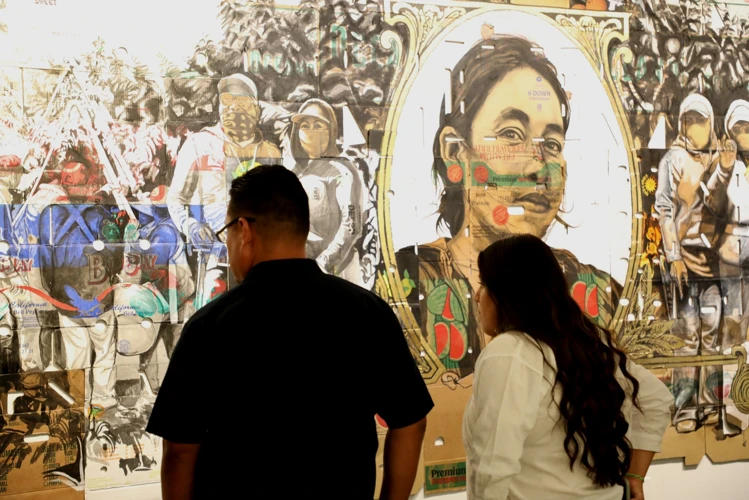
In the ever-evolving landscape of museum education, there is a growing need to rethink the role of museums in inspiring and nurturing student artists. Museums have historically been repositories of important collections, with staff who possess the expertise to make creative and informed use of these collections. However, as we look towards the future, it becomes clear that museums must embrace innovative approaches to education in order to remain relevant and impactful.
One aspect of rethinking the museum is exploring new ways to engage visitors and create inclusive spaces for student artists. Museums are increasingly embracing technology and opening up to the idea of co-creating exhibitions with their audiences. This democratizing approach allows for a more diverse range of perspectives and experiences, enriching the overall artistic journey.
Additionally, the museum of the future should strive to curate experiences that reconnect visitors to their shared humanity. It is less about worshiping masterpieces and more about enriching personal experiences. Technology, while not the ultimate goal, can serve as a vehicle to generate a deeper understanding for a cross-section of visitors. However, it should be used in a way that does not overshadow the importance of taking time to look at original pieces of art and truly appreciating their beauty and significance.
Creating inclusive spaces for student artists within museums is another important aspect of rethinking the museum. Museums should aim to be collaborative and welcoming, encouraging student artists to see themselves as integral parts of the artistic community. Through collaboration with museums, student artists can gain valuable insights and experiences that will shape their artistic journeys. This can be achieved through partnerships, mentorship programs, and opportunities for student artists to showcase their work within the museum space.
Rethinking the museum is essential for its continued relevance and impact on student artists. By exploring innovative approaches to museum education and creating inclusive spaces, museums can inspire and nurture the next generation of artists. Collaboration and imagination are key in unleashing the full potential of student artists, and museums have a unique opportunity to support and guide them on their artistic journeys. As we continue to reflect on the role of museums in society, it is clear that they hold immense potential to inspire, educate, and empower student artists. Let us embrace this potential and continue to unlock the creative spirit within us all.
Read more about museum tips for students [here](/museum-tips-for-students/).
Exploring innovative approaches to museum education
Museums are constantly evolving and seeking new ways to engage and educate their audiences, particularly when it comes to student artists. With the goal of nurturing creativity and inspiring a fresh perspective, museums are taking innovative approaches to education.
One such approach is the integration of technology into museum exhibits. Museums are embracing new technologies such as display screens, computer interactive consoles, and hand-held devices to enhance the learning experience. These interactive exhibits encourage students to actively engage with the artwork and delve deeper into the creative process. By incorporating technology, museums are able to provide a more immersive and interactive learning environment for student artists.
In addition to technology, museums are also exploring interdisciplinary partnerships to further enhance education. Collaborations between museums and academia allow for the integration of museum learning into higher education. This creates a unique opportunity for students to learn from museum professionals and gain a deeper understanding of art and culture. By bridging the gap between academia and museums, students are able to explore different perspectives and develop a well-rounded understanding of art.
Another innovative approach to museum education is the co-creation of exhibitions with museum audiences. Museums are embracing the idea of democratizing the exhibition process and involving students as co-creators. This collaborative approach allows students to have a voice in shaping the narrative and content of the exhibition. By involving students in the curation process, museums are able to create exhibitions that are more relatable and engaging for young learners.
Museums are creating inclusive spaces for student artists. They are working hard to ensure that their spaces are accessible to all, regardless of background or ability. Museums are taking steps to remove barriers and create a welcoming environment for all student artists. This includes providing resources and accommodations for students with disabilities, as well as offering programs and workshops that cater to diverse audiences.
Museums are constantly exploring innovative approaches to education. By integrating technology, fostering interdisciplinary partnerships, involving students as co-creators, and creating inclusive spaces, museums are revolutionizing the way student artists learn and engage with art. These innovative approaches not only enhance artistic skills and techniques but also expand knowledge of art history and diverse cultures. Museums are truly unlocking the untapped potential of inspiration for student artists, providing them with a platform for personal growth and self-expression.
Creating inclusive spaces for student artists
When it comes to nurturing the creativity of student artists, it is essential to provide inclusive spaces where they can thrive. Museums, with their dynamic and interdisciplinary environments, are taking innovative approaches to create such spaces for student artists.
One example of this is the ADA Creative Spaces at UNSW (University of New South Wales). These spaces are designed to foster collaboration and interdisciplinary interactions among students. They encourage students to engage with one another, share ideas, and learn from different perspectives. By providing these inclusive spaces, UNSW empowers student artists to unleash their full creative potential and shape the future of the arts.
Another example is the presidential arts initiative at the University of Michigan. This initiative, guided by a working group of arts leaders, aims to unleash imagination and creativity by collaborating with all parts of the university. The two-year startup phase will produce a roadmap through creative and inclusive engagement with the community, especially with students. This inclusive approach ensures that student artists have a voice and actively contribute to the artistic ecosystem of the university.
In Milwaukee, the March to Equality exhibition was created by students from the Northwest Opportunities Vocational Academy (NOVA), an alternative high school. With guidance from their teacher and collaboration with Arts @ Large, a nonprofit arts education organization, the students had the opportunity to showcase their work in a public venue. This collaboration not only provided a space for student artists to display their creativity but also supported the production of exhibits in a semiprofessional manner.
Creating inclusive spaces for student artists is crucial for their growth and development. It allows them to showcase their work, gain recognition, and build confidence in their artistic abilities. Inclusive spaces also provide opportunities for students to collaborate, learn from each other, and expand their artistic horizons. By embracing diversity and different perspectives, these spaces foster an inclusive artistic ecosystem where student artists can truly flourish.
Museums and educational institutions are recognizing the importance of creating inclusive spaces for student artists. These spaces not only provide opportunities for students to showcase their work but also foster collaboration, interdisciplinary interactions, and the exploration of different perspectives. By embracing inclusivity, museums empower student artists to unleash their creativity and shape the future of the arts.
Collaboration and Imagination
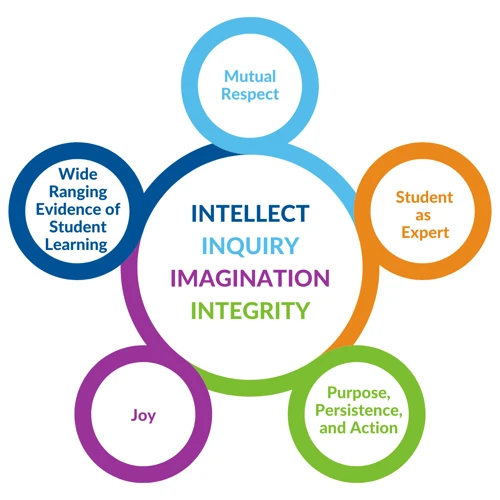
Collaboration and imagination play crucial roles in nurturing creativity among student artists. By collaborating with museums, students have the opportunity to tap into a wealth of knowledge and expertise. This collaboration allows them to explore new perspectives, challenge their own assumptions, and ultimately expand their creative horizons.
Museums offer a diverse range of resources and experiences that can inspire and ignite the imagination of student artists. Through collaboration, students can work closely with museum professionals, fellow artists, and mentors who can provide valuable feedback and guidance. This collaboration not only exposes students to different artistic techniques and approaches but also encourages them to think outside the box and explore uncharted territories.
One of the key benefits of collaboration with museums is the opportunity to engage in museum-inspired projects. These projects allow students to draw inspiration from the exhibits and collections, incorporating elements of history, culture, and creativity into their own work. This collaboration not only enhances their artistic skills but also deepens their understanding of art history and diverse cultures.
Collaboration with museums fosters a sense of community and connection among student artists. By working together on collaborative projects, students learn the importance of effective communication, teamwork, and mutual respect. They gain valuable insights and perspectives from their collaborators, helping them to refine and strengthen their creative work.
Collaboration and imagination are vital for nurturing the creative potential of student artists. Museums provide an ideal environment for such collaboration, offering a wealth of resources, expertise, and inspiration. Through collaborative projects and engagement with museum professionals, students can unleash their imagination and explore new artistic possibilities. The benefits of collaboration with museums include enhanced artistic skills, a deeper understanding of art history and diverse cultures, and personal growth through self-expression. By embracing collaboration and encouraging imagination, museums can continue to inspire and empower the next generation of artists.
Encouraging student artists to collaborate with museums
Museums hold immense potential for student artists to collaborate and engage with their exhibits. By fostering a collaborative environment, museums can empower student artists to unleash their creativity and explore new artistic horizons.
One way museums encourage collaboration is by providing opportunities for student artists to showcase their work within their galleries. This not only gives students a platform to display their talents but also allows them to interact with a wider audience and receive valuable feedback. Through these collaborations, students can gain exposure, build connections within the art community, and expand their artistic network.
Additionally, museums can organize workshops and programs specifically designed for student artists. These initiatives provide a space for students to collaborate with museum professionals, educators, and other artists. By working together on projects and exchanging ideas, student artists can learn from experienced professionals, gain insights into different artistic techniques, and broaden their artistic perspectives.
Collaboration between student artists and museums also extends beyond the physical space of the museum. Museums can partner with educational institutions to develop joint projects or exhibitions that involve student artists. This collaboration allows students to tap into the vast resources and expertise of the museum while contributing their unique artistic perspectives. By bridging the gap between academia and the art world, these collaborations create a symbiotic relationship that benefits both the student artists and the museum.
Museums can actively seek input from student artists when planning exhibitions or educational programs. By involving student artists in the decision-making process, museums can ensure that their programs are relevant, engaging, and reflective of the interests and needs of young artists. This collaborative approach not only gives students a sense of ownership and pride but also fosters a sense of community and inclusivity within the museum space.
Museums play a vital role in encouraging student artists to collaborate and engage with their exhibits. By providing platforms for showcasing student artwork, organizing workshops and programs, and involving student artists in the decision-making process, museums empower young artists to explore their creativity, expand their artistic skills, and contribute to the larger art community. Through collaboration with museums, student artists can unlock their full potential and find inspiration in the rich cultural and artistic heritage that museums have to offer.
Unleashing imagination through museum-inspired projects
Unleashing imagination through museum-inspired projects
Museums have long been recognized as spaces that ignite imagination and inspire creativity. Through their vast collections and thought-provoking exhibits, museums provide a fertile ground for students to explore their artistic abilities and unleash their imagination.
One of the ways museums achieve this is through museum-inspired projects. These projects are designed to engage students in hands-on, interactive experiences that encourage them to think outside the box and push the boundaries of their creativity. By providing students with the opportunity to create their own artwork based on the exhibits they see, museums empower them to express their unique perspectives and ideas.
These museum-inspired projects often involve collaboration, allowing students to work together and exchange ideas. This collaborative process not only enhances their artistic skills but also fosters teamwork and communication, important skills that are valuable both in the art world and beyond.
Museum-inspired projects often encourage students to experiment with different materials and techniques. Museums provide a wide range of artistic styles and mediums, exposing students to diverse artistic practices. This exposure allows students to expand their knowledge and understanding of art history and diverse cultures, broadening their artistic horizons.
Through these projects, students are not only creating art but also gaining a deeper appreciation for the art form itself. By engaging with the exhibits and learning about the context and inspiration behind each artwork, students develop a greater understanding of the artistic process and the creative journey.
Museum-inspired projects provide a platform for students to explore their own personal growth and self-expression. By encouraging students to reflect on their own experiences, emotions, and perspectives, these projects empower them to create meaningful and authentic artwork that reflects their own unique identities.
Museum-inspired projects are a powerful tool for unleashing imagination and nurturing creativity among student artists. Through these projects, students are able to engage with exhibits, collaborate with their peers, experiment with different materials and techniques, and explore their own personal growth. Museums play a vital role in providing the inspiration and resources needed to foster the next generation of artists and creative thinkers.
Benefits of Museums for Student Artists
Museums provide a multitude of benefits for student artists, enhancing their skills, expanding their knowledge of art history and diverse cultures, and fostering personal growth and self-expression.
1. Enhancing Artistic Skills and Techniques:
Museums offer a treasure trove of artistic inspiration. By immersing themselves in the works of renowned artists, student artists can observe and analyze different techniques, styles, and mediums. This exposure allows them to expand their artistic repertoire and experiment with new approaches. Additionally, museums often host workshops and classes that provide valuable hands-on learning experiences, allowing students to refine their skills under the guidance of experts.
2. Expanding Knowledge of Art History and Diverse Cultures:
Museum collections encompass a wide range of art from various time periods and cultures. By exploring these collections, student artists can deepen their understanding of art history and gain insights into different artistic traditions and cultural perspectives. This exposure to diverse art forms broadens their artistic horizons, influences their creative process, and encourages them to incorporate elements from different cultures into their own work. It also fosters cultural appreciation and promotes cross-cultural understanding.
3. Fostering Personal Growth and Self-Expression:
Museums provide a space for student artists to reflect, explore, and express themselves. By engaging with artworks that evoke emotions and tell stories, students are encouraged to tap into their own thoughts, feelings, and experiences. Museums inspire self-reflection and introspection, allowing student artists to develop a deeper understanding of themselves and their artistic voice. This exploration of self-expression fosters personal growth, boosts self-confidence, and nurtures a sense of identity and purpose.
Museums play a vital role in the development of student artists. Through their diverse collections, interactive exhibits, and educational programs, museums enhance artistic skills, expand knowledge of art history and diverse cultures, and foster personal growth and self-expression. By harnessing the power of museums as inspiration, student artists can unlock their full creative potential and embark on a lifelong artistic journey.
Enhancing artistic skills and techniques
Enhancing Artistic Skills and Techniques
Developing artistic skills and techniques is a fundamental aspect of a student artist’s journey. Museums play a pivotal role in enhancing these skills and helping students refine their craft. Through various educational programs and exhibits, museums provide invaluable opportunities for students to immerse themselves in the world of art and deepen their understanding of different artistic practices.
One way museums enhance artistic skills is through firsthand study and facilitated discussion of original works of art. By engaging with these artworks, students can make connections across disciplines and gain insights into the creative processes, techniques, and materials used by renowned artists. This close examination and analysis promote critical thinking and encourage students to think creatively in their own artistic endeavors.
Museums offer workshops and classes that focus on specific artistic skills and techniques. These hands-on experiences allow students to learn directly from skilled instructors who specialize in the medium or style they are interested in. Whether it’s painting, sculpture, pottery, or poetry, these classes provide a practical level of instruction that helps students refine their abilities and hone their artistic techniques.
In addition to practical instruction, museums also foster creativity and innovative thinking through their exhibits and displays. By showcasing a diverse range of artworks from different periods and cultures, museums expose students to a wide array of artistic styles and approaches. This exposure encourages students to think outside the box, explore new artistic possibilities, and experiment with unconventional techniques.
By actively engaging with the artworks on display, students can observe and learn from the creative choices made by the artists. They can analyze the use of color, composition, texture, and other elements that contribute to the overall aesthetic appeal of a piece. This observation and analysis not only enhance their artistic skills but also broaden their artistic vocabulary and visual literacy.
Museums provide a supportive and inspiring environment for students to practice and refine their artistic skills. They offer a space where students can experiment, take risks, and receive feedback from both instructors and fellow artists. This constructive feedback helps students identify areas for improvement, encourages them to push their creative boundaries, and fosters a sense of discipline and resilience in their artistic practice.
Museums play a vital role in enhancing the artistic skills and techniques of student artists. Through firsthand study, practical instruction, exposure to diverse artistic styles, and a supportive learning environment, museums provide invaluable opportunities for students to refine their craft, develop their creativity, and become proficient artists. By tapping into the resources and expertise offered by museums, students can unlock their full artistic potential and embark on a lifelong journey of artistic exploration and self-expression.
Expanding knowledge of art history and diverse cultures
Art museums play a crucial role in expanding students’ knowledge of art history and diverse cultures. By studying original works of art, students have the opportunity to explore different artistic movements, styles, and techniques throughout history. This firsthand study allows them to make connections across disciplines and enrich their understanding of other subjects.
Through close examination of artworks and facilitated discussions, students can learn about the creative processes, techniques, and materials used by artists. They can analyze and interpret the meaning behind the artworks, developing critical thinking skills that are important for success in both life and school. This includes skills such as inquiry, analysis, and interpretation, as well as flexibility, imagination, observation, communication, empathy, and reflection.
Art museums also provide a platform for students to engage with diverse cultures. By studying artworks from different regions and time periods, students can gain a deeper appreciation for the cultural significance and diversity of art. They can learn about the traditions, customs, and beliefs of different societies, expanding their worldview and fostering a sense of empathy and understanding.
Art museum visits offer a firsthand look at the rich history of cities like London, where objects in museums tell deeply personal stories. Students can explore the history and heritage of their own city or region, connecting with their roots and developing a sense of pride and identity.
The study of art in museums also encourages students to dream of a wide range of possibilities. By exposing them to different artistic styles and ideas, museums inspire creativity and imagination. Students can explore their own artistic potential and consider new ways of expressing themselves.
Art museums are important in preserving and promoting native cultures. They serve as a platform for showcasing and celebrating the art and traditions of indigenous communities. By highlighting the importance of preserving native cultures, museums contribute to the preservation of cultural heritage and the promotion of diversity.
Art museums play a vital role in expanding students’ knowledge of art history and diverse cultures. Through firsthand study of original artworks and facilitated discussions, students develop critical thinking skills and gain a deeper understanding of different artistic movements and styles. They also have the opportunity to explore the rich history and cultural heritage of their own city or region. Museums inspire creativity and imagination, encouraging students to dream of new possibilities. Additionally, museums contribute to the preservation and promotion of native cultures, fostering a sense of pride and appreciation for diversity.
Fostering personal growth and self-expression
In the realm of art, personal growth and self-expression are essential aspects of an artist’s journey. Museums play a significant role in nurturing these qualities among student artists. By immersing themselves in the diverse exhibitions and collections, students are encouraged to question, explore, and challenge conventional thinking. This cultivation of curiosity empowers them to think critically, seek knowledge, and develop a deep understanding of the world around them.
Within the supportive and caring community that museums create, students feel valued and supported in their artistic endeavors. Teachers and staff actively promote a sense of belonging, ensuring that each student’s unique voice is heard and appreciated. This environment allows for the emergence of authentic self-expression, where vulnerability is embraced, and true emotions and experiences are infused into their art. Through storytelling, students can share their inner world with others, creating a powerful medium for connection and personal growth.
Engaging in creative activities within the museum setting not only enhances artistic skills and techniques but also contributes to emotional well-being. The act of self-expression through art provides an outlet for stress relief, emotional catharsis, and mindfulness. It becomes a source of joy and fulfillment, allowing students to explore their innermost thoughts and feelings.
By fostering personal growth and self-expression, museums unleash the inner genius within each student artist. They provide a platform for exploration, innovation, and the development of a unique artistic voice. Through this process, students not only enhance their creative abilities but also develop a deeper sense of self and a greater appreciation for the beauty and diversity of the world around them.
Museums serve as catalysts for personal growth and self-expression among student artists. By creating an environment that encourages curiosity, supports individuality, and promotes emotional well-being, museums empower students to embrace their authentic voice and unleash their creative potential. Through this journey of self-discovery, students develop not only as artists but as individuals who are curious, empathetic, and open to new experiences. Museums truly have the power to shape the next generation of artists and inspire them to make meaningful contributions to the world through their art.
Conclusion
In conclusion, museums have emerged as powerful catalysts for creativity and inspiration among student artists. Through their role as interactive classrooms, museums provide a unique space for students to engage with exhibits and explore the creative process. The innovative approaches taken by museums in education have allowed students to think differently and push the boundaries of their own capabilities. By creating inclusive spaces, museums have fostered collaboration and imagination among student artists, encouraging them to collaborate with museums and unleash their imagination through museum-inspired projects.
The benefits of museums for student artists are significant. Not only do museums enhance artistic skills and techniques, but they also expand knowledge of art history and diverse cultures. By exposing students to a wide range of artistic expressions and perspectives, museums contribute to their personal growth and self-expression. Museums serve as a safe space for experimentation, allowing students to take risks, make mistakes, and discover their own capabilities.
The potential of museums as inspiration for student artists is vast and untapped. As museums continue to evolve and adapt, they have the opportunity to further nurture creativity, engage learners, and inspire new generations of artists. By embracing the role of museums as agents of change, educators and institutions can harness the power of art to transform lives and society.
In a world where creativity and innovation are valued more than ever, museums play a crucial role in shaping the minds of future artists. The combination of art, culture, and education that museums offer is unparalleled. By leveraging the power of art to connect, understand, and explore perceptions, museums have the ability to ignite the spark of creativity in every individual who visits.
In conclusion, museums are not merely repositories of art, but dynamic spaces that promote creativity, foster empathy, and uplift the debate. As we continue to recognize the immense potential of museums as inspiration for student artists, let us embrace their transformative power and continue to support their mission of cultivating creativity and innovation in our society.
Frequently Asked Questions
FAQs
1. How do museums nurture creativity among young learners?
Museums serve as interactive classrooms where students can engage with exhibits and explore the creative process, fostering creativity among young learners.
2. What is the role of museums in inspiring students to think differently?
Museums act as agents of change, challenging students to think differently and pushing the boundaries of their own capabilities.
3. How do museums create inclusive spaces for student artists?
Museums are exploring innovative approaches to education and creating inclusive spaces where student artists can feel welcome and supported.
4. Why is collaboration with museums important for student artists?
Collaboration with museums encourages student artists to explore new ideas and perspectives, expanding their creative horizons.
5. How do museum-inspired projects unleash imagination in student artists?
Museum-inspired projects provide a platform for student artists to unleash their imagination and think outside the box.
6. How do museums enhance artistic skills and techniques for student artists?
Museums offer opportunities for student artists to enhance their artistic skills and techniques through exposure to a wide range of artworks and styles.
7. How do museums expand student artists’ knowledge of art history and diverse cultures?
By showcasing artworks from different time periods and cultures, museums expand student artists’ knowledge of art history and diverse cultural perspectives.
8. How do museums foster personal growth and self-expression in student artists?
Museums provide a safe space for student artists to explore their own capabilities, discover their potential, and express themselves authentically.
9. Can museums help students overcome creative blocks and find inspiration?
Yes, museums can help students overcome creative blocks by providing a space for reflection, experimentation, and inspiration.
10. How can museums be a testing ground for new teaching approaches?
Museums offer a unique setting where educators can explore new ways of teaching that may not be possible in a traditional classroom, making museums a testing ground for innovative teaching approaches.


